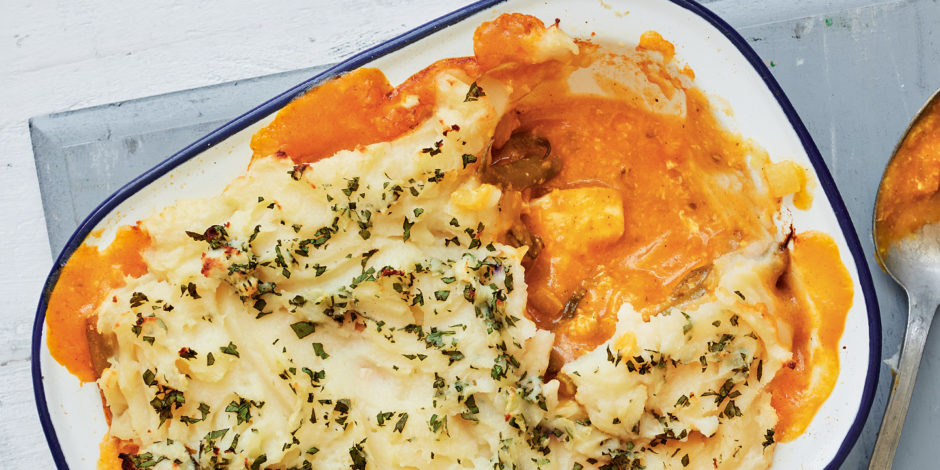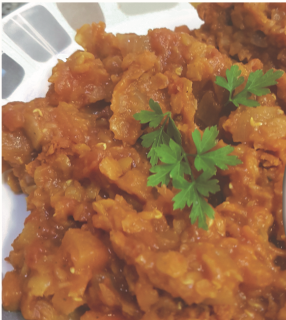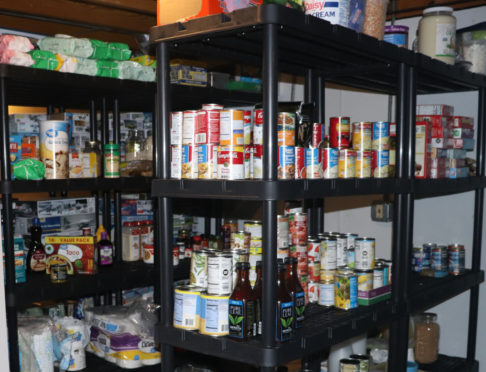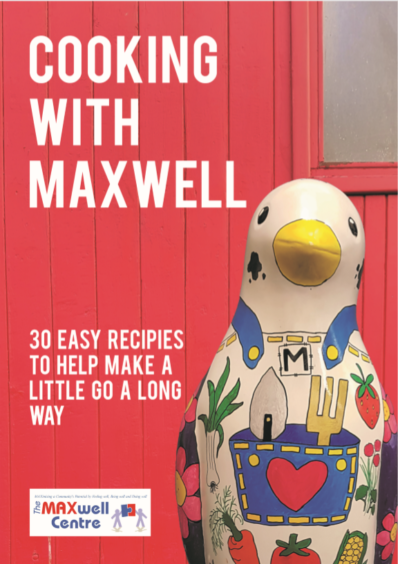Although canned food often gets a bad rap, nutrition experts tell us why it can be healthy, and a community centre shares lockdown recipes using tinned ingredients.
When it comes to food, one thing the coronavirus crisis has highlighted is the gulf between the haves and have-nots.
People with the means to stockpile multiple freezers or who have the land, time and know-how to grow their own produce are looked on with envy by those having to queue outside supermarkets and hunt for delivery slots.
Meanwhile food poverty is worsening, with foodbanks and community larders experiencing a spike in demand after many lost their jobs or found themselves living on reduced incomes due to the pandemic.
And while most of us know it’s best to cook from scratch with fresh ingredients, sourcing them can be difficult and costly in the current climate. That’s where canned goods come in.
Whether you’re struggling financially, self-isolating or are simply pushed for time as you juggle home-working and childcare, you can make a variety of meals from tinned food, beyond the usual beans on toast – and it’s healthier than you think.
Nutritional therapist Beverley Sarstedt, who runs wellness centre Nourishing Insights in Aberdeen, explained that many beneficial nutrients are preserved during the canning process.
“Canned foods can be very helpful for people who are unable to get to the shops as they have a long shelf life and can make the difference between getting most of the nutrients we require or none at all”, she added.
“Foods are generally picked and canned quickly to avoid loss of nutrients. The macronutrients such as protein, fat and carbohydrate remain unchanged as do minerals and fat-soluble nutrients.
There are many canned vegetables, pulses and oily fish like sardines and salmon which are healthy additions to our diet and to be encouraged.
“Things like canned beans and pulses can be used to bulk out meals such as soups and stews when someone only has a small amount of fresh produce and would offer a great source of protein, fibre and nutrients to the diet.
“One of the difficulties with canning is that foods can end up with other ingredients added in which are not health-promoting, for example added sugars, high amounts of salt and poor quality fats and oils.
“The key here is to prioritise foods as close to their natural state as possible – for example, a tin containing only tomatoes – and always check labels for those hidden ‘extras’. It’s much better to add our own herbs and spices afterwards.”
Beverley explained that the high-heat canning process actually makes certain foods healthier, such as tomatoes which release antioxidants when cooked.
However, the heat can be a double-edged sword as it drains foods of Vitamin B and C, meaning that people who rely on tinned foods should take these vitamins in supplements where possible.
“During the canning process the foods are exposed to high heat, which can result in losses of water soluble nutrients”, she added.
“The water soluble nutrients such as immune boosting vitamin C and the B vitamins can easily be supplemented to make up any deficits.”
Shehnaz Bashir, a registered dietitian practising in Dundee under the company name Gutsy Nutrition and Dietetics, agrees that tinned food can be as nutritious as fresh produce, as long as we avoid cans with added salt and sugar.
She said: “Tinned food can help us to maintain a balanced diet. It is also a cheaper alternative and with a longer shelf life resulting in less food waste.
“A lot of the vital nutrients are still present in tinned foods and can help to meet your nutrient recommendations. You can find vitamin D and omega-3 fatty acids in tinned salmon, mackerel and sardines.
“Tinned fruit and vegetables also count towards your five a day – 80 grams is one portion. Remember to include a variety of these each day. Food can be bulked out with chickpeas, beans or lentils adding extra fibre for gut health.”
To help people cook healthily with tins and other cheap cupboard ingredients, the MAXwell Centre in Dundee has put together a book of simple recipes titled Cooking with MAXwell: 30 Easy Recipes to Make a Little Go a Long Way.
The centre signposts vulnerable people to services providing emergency food parcels during the lockdown and also runs a “community cupboard” offering free cupboard staples and fresh fruit and vegetables with no questions asked.
“The recipes from the book are targeted at people who receive emergency food parcels but they’re helpful for anyone really, especially in the current situation”, said project manager Alison Goodfellow.
“The ingredients are very basic – mostly tinned food, simple vegetables and pulses that can be bought cheaply in any shop and are found in most foodbanks.
“During lockdown we’re all trying to go out less so it makes sense to use up what we already have in our cupboards for cooking.”
Tinned food recipes:
Chicken and Sweetcorn Pie (Serves 3)
 Ingredients:
Ingredients:
• 1 tin of chicken in sauce
• 1 small tin of sweetcorn
• Packet of instant mash (or about 175g)
• 1 egg (optional)
• 2 tablespoons of milk (optional)
Method:
1.Preheat the oven to 180°C 2.
2.Tip the chicken in sauce into a casserole dish or baking tray.
3. Add the sweetcorn and stir through.
4. Spoon the mash on top and smooth over the chicken mixture.
5. Mix the egg and milk together and use to glaze the top of the pie by spreading it over the mash.
6. Cook in the oven for 25/30 minutes.
7. Serve with tinned peas or carrots if you have them.
Curried Lentils (serves 2)

Ingredients:
• Oil for frying
• 1 onion (fresh or 1 small can)
• 2 carrots (fresh or 1 small can)
• 200g dried lentils (can be from a can)
• 2 tablespoons curry powder
• 1 tin of tomatoes or 1 carton of passata
• 750g of chicken or vegetable stock, made from stock cubes
Method:
1. Heat the oil in a saucepan on a medium heat.
2. Chop the onion and carrots into small cubes.
3. Add just the onion to the oil and fry for 5 minutes.
4. Add the curry powder and mix into the onion, fry for 1 minute.
5. Add the lentils, tomatoes or passata.
6. Add the stock and mix through.
8. Simmer for 45 minutes.
9. Once ready, serve with as much boiled or tinned rice as you’d like.
Tuna Fried Rice (serves 2)
Ingredients
• 1 tin of tuna
• 2 tablespoons of frozen or tinned peas
• 2 tablespoons of frozen or tinned sweetcorn
• 1 onion or 3 spring onions
• 1 packet of microwave rice or 250g of cooked cold rice
• Soy sauce or tomato ketchup
• 1 tablespoon of oil
Method:
1. Dice the onion into small cubes or chop the spring onion into 1cm chunks.
2. Heat the oil in a large frying pan or wok on a medium heat.
3. Add the rice and stir around the pan for 5 minutes.
4. Add the peas and sweetcorn.
5. Drain the liquid from the tin of tuna, then add to the pan.
6. Mix it all together and cook for another 5 minutes, keep stirring during this time.
7. Finally add the soy sauce or ketchup.

